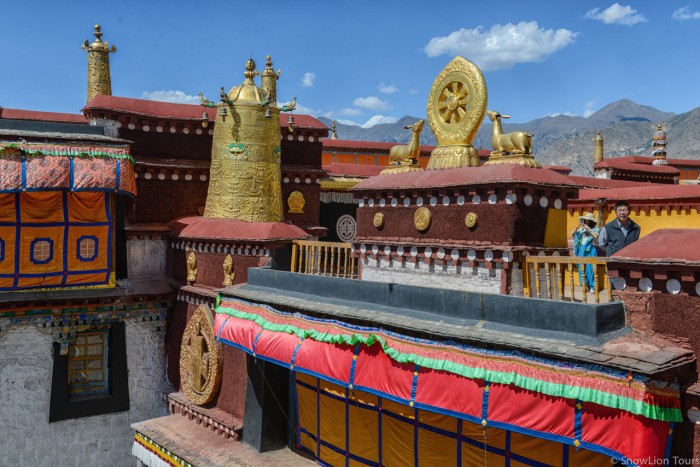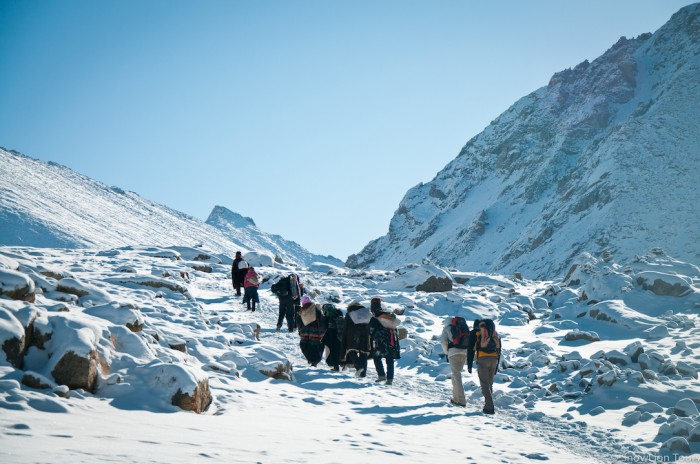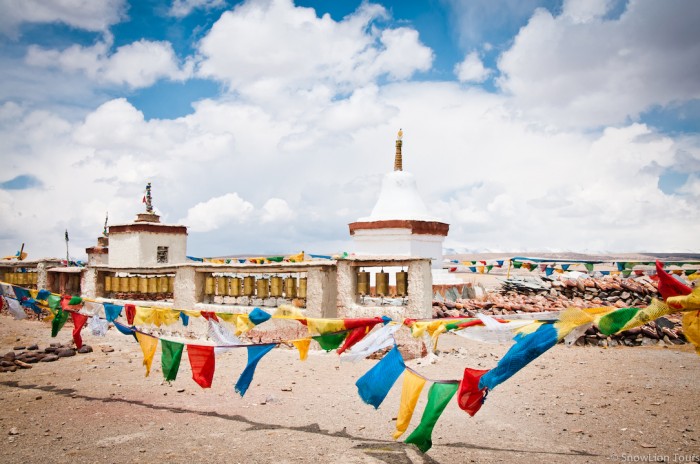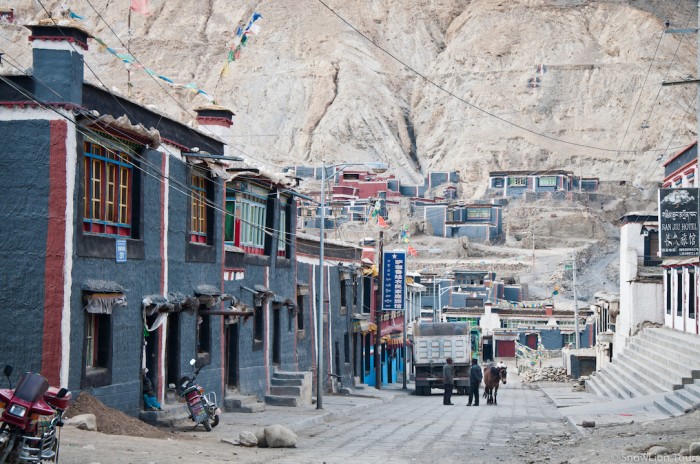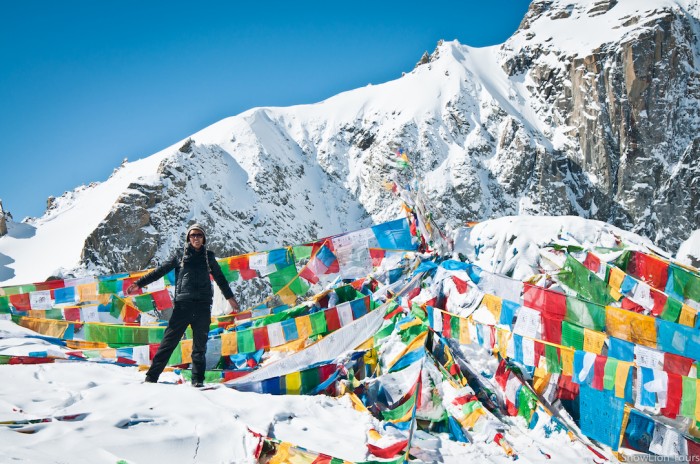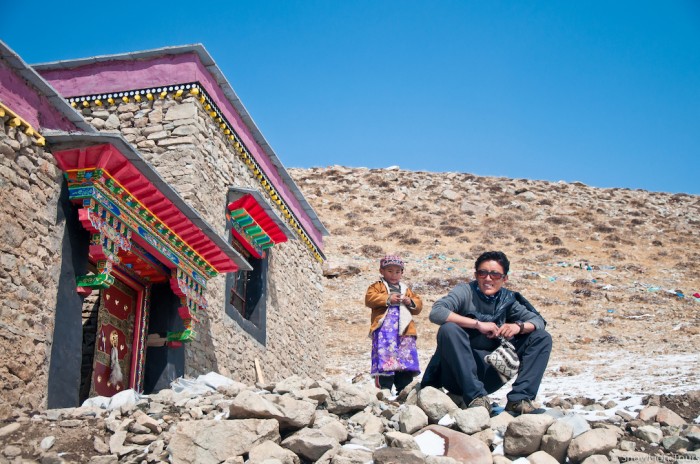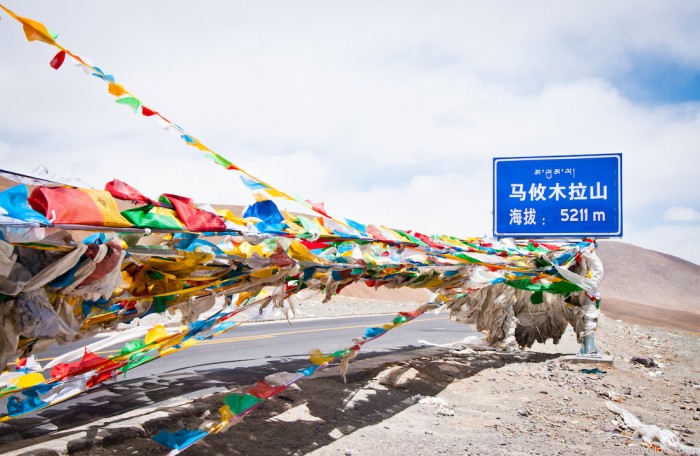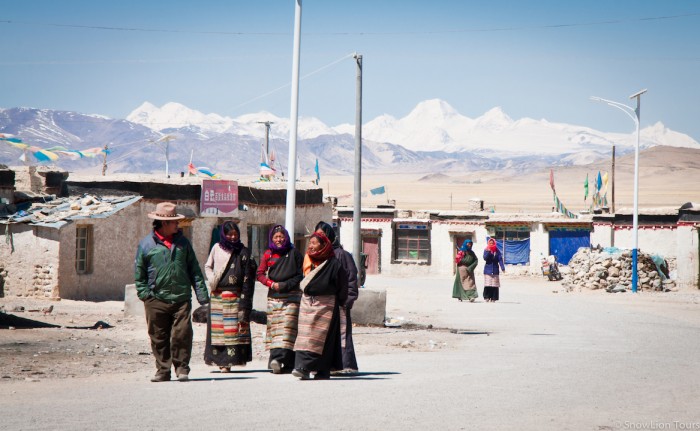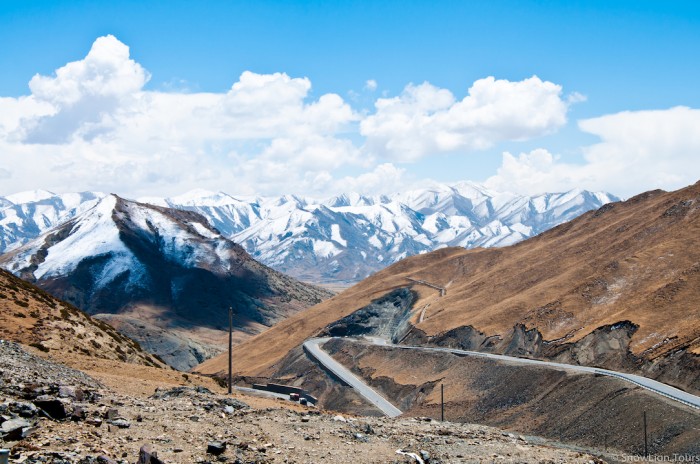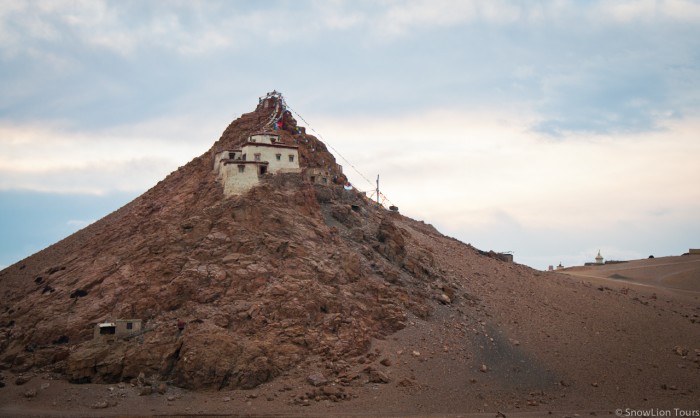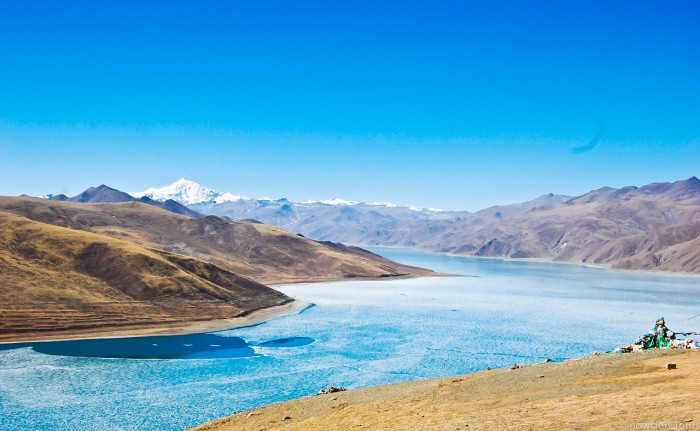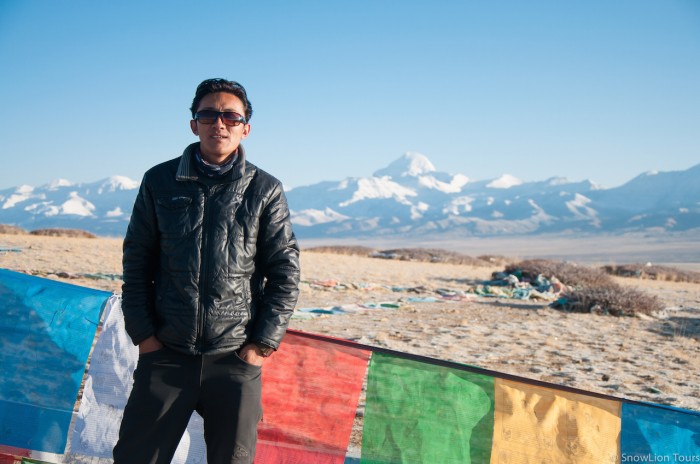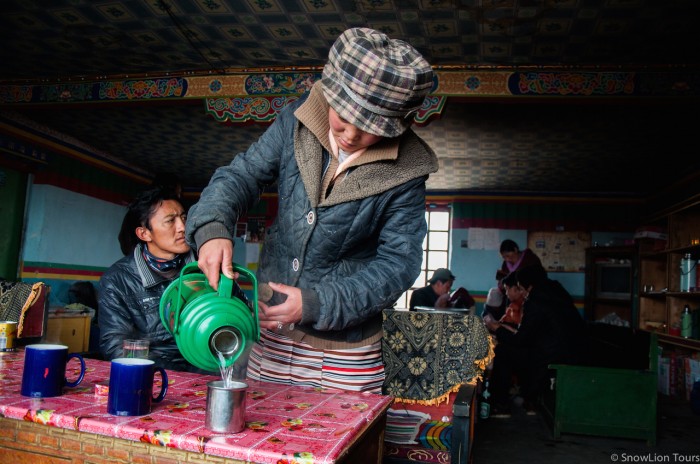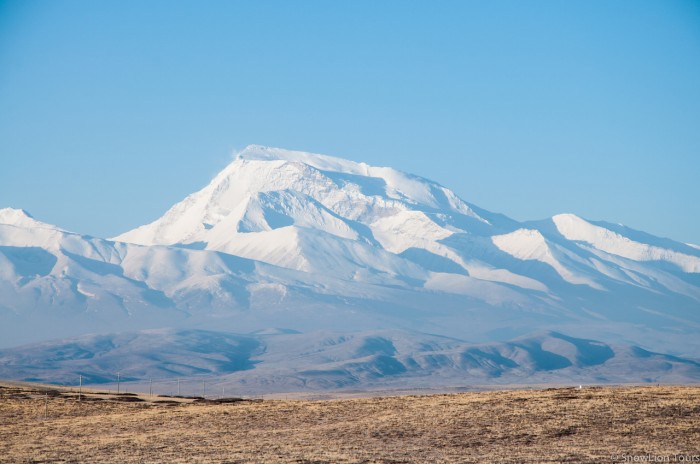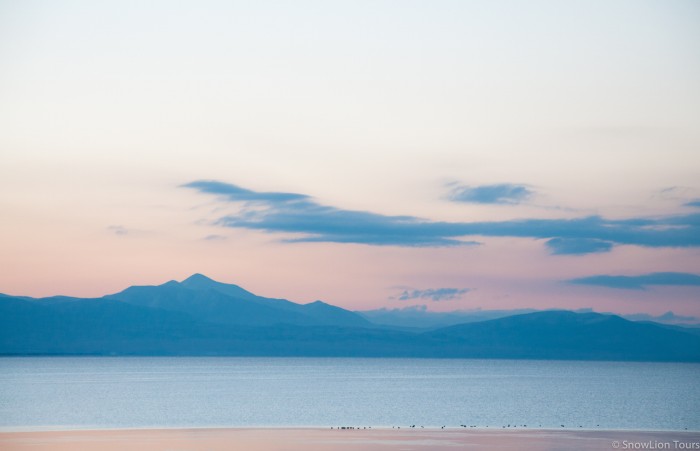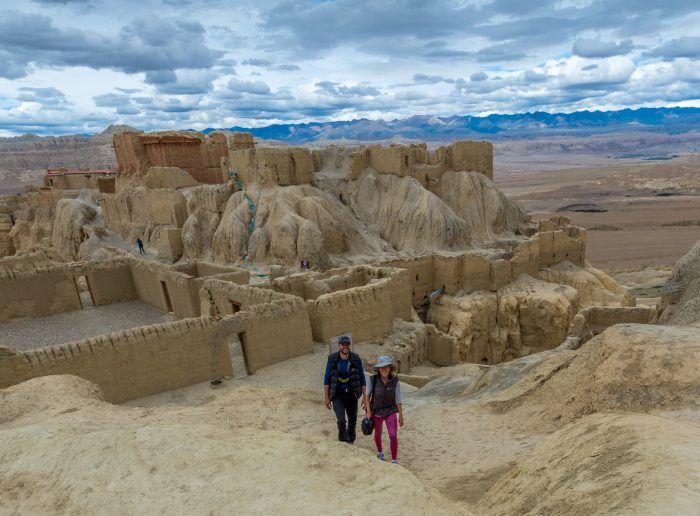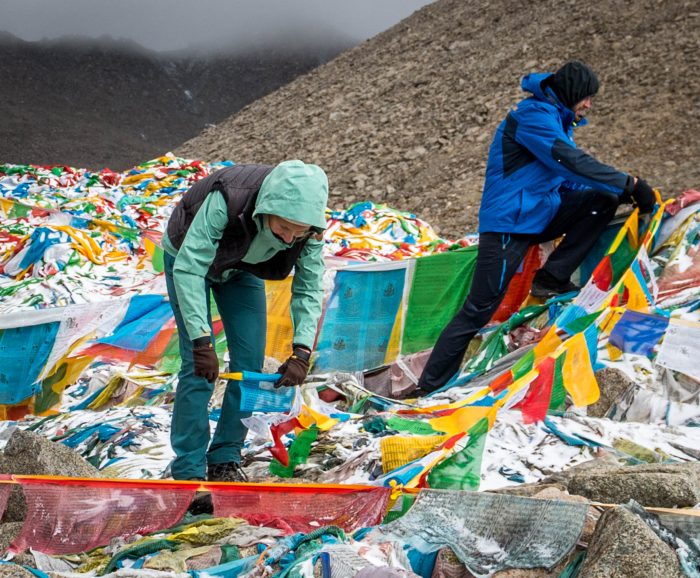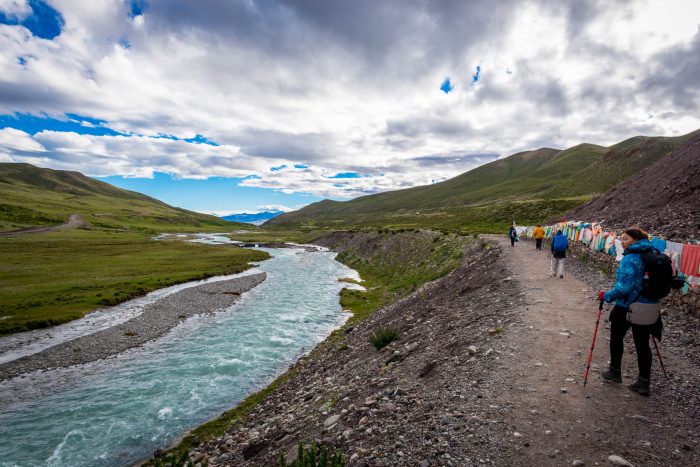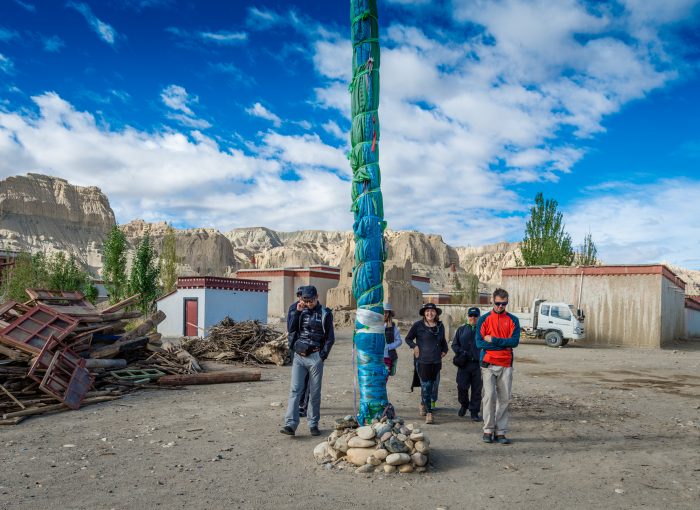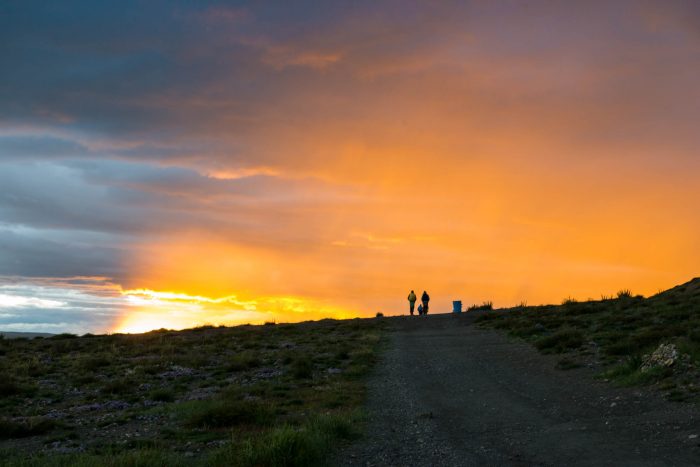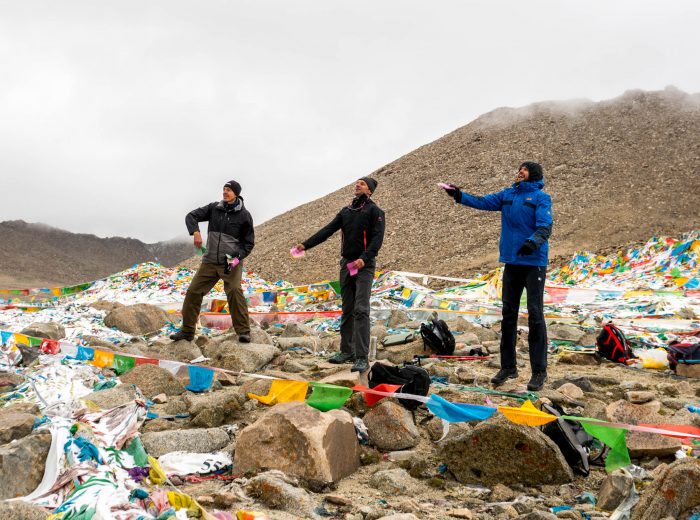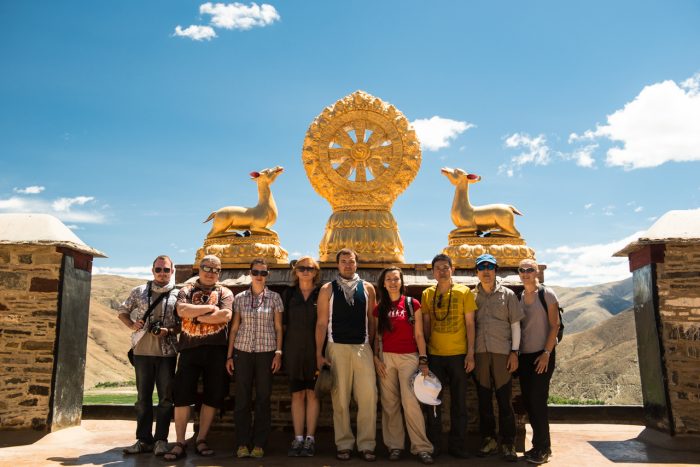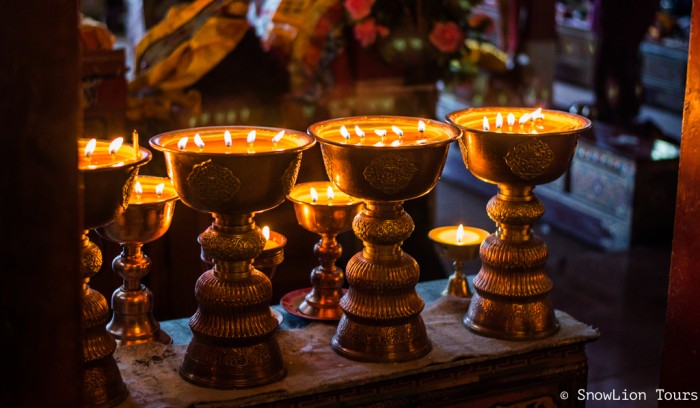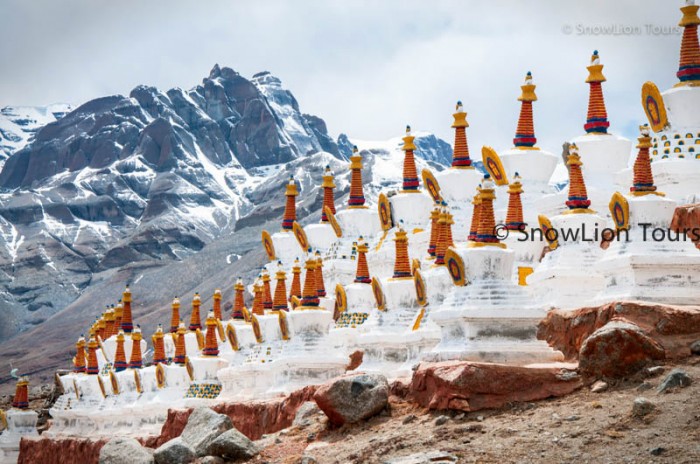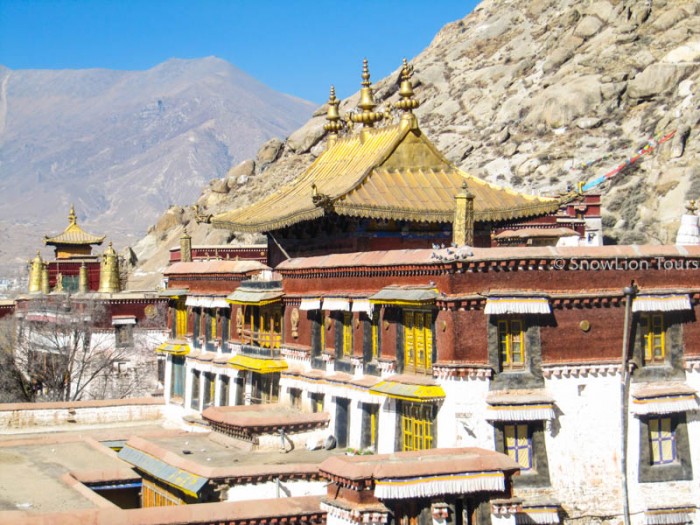Mt. Kailash, which is known as the Precious Jewel of Snows in Tibetan, is considered by Buddhists to be the abode of the deity Chakrasamvara. It is said that if one does 108 circumambulations, one will reach enlightenment. The great Tibetan poet-saint Milarepa once declared, “There is no place more powerful for practice, more blessed, or more marvelous than this. May all pilgrims and practitioners be welcome!”
Route: Lhasa – Yamdro Lake – Gyantse – Shigatse – Saga – Lake Manasarovar – Darchen – Saga Dawa Festival in Tarboche – three days trek around Mt. Kailash – Paryang – Saga – Kyirong – Lhasa
Highlights
- Lhasa
- Yamdrok Lake and Lake Manasarovar
- Saga Dawa Festival 2025
- 3 Day Mt. Kailash Trek
Details
- 15 day trip begins and ends in Kathmandu
- Optional: Extra 3 days to explore less explored monasteries in Lhasa
- Altitude from 3000-5600m
Dates
- 2025 Group tour: June 1st – June 15th
June 1 / Day 1: Arrival in Lhasa [3,656m]
Your Tibetan journey begins with arrival at Lhasa’s Gonggar Airport. The scenic drive to Lhasa takes about an hour, offering your first glimpses of the Tibetan plateau. This day is dedicated to acclimatization – your body needs time to adjust to the high altitude. Take a gentle evening stroll around Barkhor Street nearby your hotel if you’re feeling well, but avoid any strenuous activity. The key is to drink plenty of water and get adequate rest to prepare for the adventures ahead.
June 2 / Day 2: Sacred Monasteries of Lhasa
Today introduces you to Lhasa’s monastic treasures. Begin at Drepung Monastery, once housing 10,000 monks, where you’ll explore its whitewashed buildings cascading down the hillside. Continue to the intimate Nechung Monastery, historically home to Tibet’s state oracle. The day culminates at Sera Monastery, timing your visit to witness the famous afternoon monk debates – a centuries-old tradition where young monks hone their philosophical knowledge through spirited discussion.
June 3 / Day 3: Heart of Lhasa
Start early at the iconic Potala Palace, the architectural wonder that dominates Lhasa’s skyline. Your morning explores this 13-story, 1,000-room palace, former winter residence of the Dalai Lamas. The afternoon takes you to Jokhang Temple, Tibet’s most sacred site, where you’ll join pilgrims circling this spiritual center. Complete your day at Ramoche Temple, housing one of Tibet’s most sacred statues, and immerse yourself in the vibrant atmosphere of surrounding Tibetan quarters.
June 4 / Day 4: Lhasa to Gyantse [261km]
Departing Lhasa, your journey crosses the Khamba La pass (4,794m) to reach the stunning turquoise expanse of Yamdrok Lake, one of Tibet’s sacred lakes. The dramatic drive continues to Gyantse, where you’ll explore the remarkable Palkor Chode Monastery complex, home to the famous Kumbum stupa – a nine-story mandala in architectural form. End your day with a visit to the peaceful Changra Gompa, offering spectacular views over the valley.
June 5 / Day 5: Gyantse to Shigatse [90km]
Begin with a visit to the historical Narthang Monastery, once one of Tibet’s great printing centers. The journey continues to Shigatse, Tibet’s second-largest city, where you’ll spend the afternoon exploring the magnificent Tashi Lhunpo Monastery, traditional seat of the Panchen Lamas. Marvel at the world’s largest gilded bronze Buddha statue and the intricate religious artwork adorning the monastery’s halls.
June 6 / Day 6: Shigatse to Saga [452km]
A full day’s drive across the Tibetan plateau, witnessing the landscape transition from agricultural valleys to vast grasslands. The route passes through small Tibetan settlements and nomadic camps, offering glimpses into traditional life on the plateau. Saga, at 4,640m, serves as an important rest stop before heading deeper into Western Tibet.
June 7 / Day 7: Saga to Darchen [462km]
The journey to Darchen takes you through some of Tibet’s most remote and stunning landscapes. The road climbs through high passes and crosses vast plains, with distant views of the Himalayan range. Darchen, the gateway to Mount Kailash, sits at 4,575m beneath the sacred mountain’s southern face.
June 8 / Day 8: 1st Day of the Mount Kailash kora, trekking distance 19km and 6 -7 hours.
Walk along beautiful rocky cliffs, take deep breaths of fresh air. From time to time, the face of Mt. Kailash will appear. The trail passes the stone piled pass with colorful prayer flags, famous Tarpoche Flagpole, sky burial site and then enters Lha Chu valley. at the gate of this rocky canyon, a small monastery called Chugu Monastery with meditation cave of Tibetan Great Yogi Melaripa is on the left side of this canyon across the river. If you are a good trekker and interested in meditation, you can follow the small trail leading to this monastery at the left side of the river while others may continually go on main trail. Pay a visit to this monastery takes extra one hour. Afterwards, you can join the main trail cross the bridge below the monastery. Both sides of this canyon are high steep rocky mountains which are representing Bodhisattvas. Fox example, the three high rocky mountains at the left before reach Dirapuk Monastery represent “Rigsum Gonpo” in Tibetan or Three Bodhisattvas ( Manjushri, Avalokiteshvara and Vajrapani). After half hour of walking, you will reach sacred Dira Puk monastery which is located at an elevation of 5,000 meters by mid-afternoon. Here you can see the North face of the Mt. Kailash. This sight is also considered as a birthplace of Shiva – one of the primary forms of God in Hinduism. Spend the night in the monastery guest house.
June 9 /Day 9: 2nd day of the Mount Kailash kora – Dolma la pass (5650 m) – Zuthal Puk (4815m), Trekking distance 12km and 7 hours.
This place is the the closest place to view Mt. Kailash in entire kora. It’s right behind the guesthouses, so enjoy this last time close-up view of this holy mountain, then we start the day. Hike across a valley up to the Dolma-La Pass. The trail is much more dramatic today as you are ascending from 5050m to 5650m above sea level. Though this numbers are not big difference but given the altitude in this area, it is the most difficult part of the trek. When you reach at the top, make an offering, take a break (or meditate), and leave behind all your problems and worries. Let the prayer flags at the mountain pass bring the positive energy to you and your families. Afterwards, begin descending. A mirror – like turquoise lake will appear in front of you in the middle of black rocky mountains, which said to be water offering for the holy mountain. By the late afternoon arrive at Zuthal Puk , the cave of miracles where Milerepa once stayed.
June 10 /Day 10: 3rd day of the Mount Kailash Trek, view of Mt. Nemo Nani and drive to lake Manasarovar
Start the day by following one of the clearest river you have ever seen. The trail is flat and much greener. At the end of the valley before turning right, a stunning view of snow mountain Nemo Nani (altitude 7728m) will appear in your eyes. After finishing your circuit of Mt. Kailash, your car will pick you up and take you to the Lake Manasarovar – one of the highest freshwater lakes in the world. This turquoise-colored lake is full of fish and swans. This lake is the most holy and powerful lake for several traditions including Hinduism, Buddhism and Jainism. Holy Mt. Kailash, Mt. Gurula-Mandala, and Lake Rashekshi surround Manasarovar. The region is considered rich in gold and other minerals, hot springs and hundreds of wild living creatures. Then visit Rakshas Tal lake and Chiu Monastery, a small monastery located upper on a hillside. You can dip into a hot spring there. If your group stay until sunrise, a walk to the mountain slope to see full view of the lake is recommended.
June 11 / Day 11: Saga Dawa Festival and drive to Saga
Walk about 40-50 minutes, we will get to the ground of Saga Dawa Festival, witness the ritual performances and renew the Tarpoche prayer flag pole. Saga Dawa Festival is the biggest festival in Ngari area. Many Tibetans all over the Ngari region come to join this festival. Many rituals like Buddhism, Bon and Hinduism will be taking place around Tarboche. The Saga Dawa Festival honors the life of Buddha Shakyamuni, and the main point of the festival is to pray for the long life of all the gurus, for the spreading of teachings of Buddha, and for the happiness of all the sentient beings. This festival also offers a great opportunity for photo shootings. Then we will return back to Darchen and drive back to Saga.
June 12 / Day 12: Saga to Kyirong [380km]
Travel through dramatic gorges to reach Drakar Taso cave temple, associated with Milarepa. Continue to Kyirong, visiting the sacred Phakpa Lhakang temple and exploring the meditation cave of Guru Rinpoche. This border town offers a different perspective of Tibet, with its subtropical valley climate.
June 13 / Day 13: Kyirong – Kathmandu or return back to Shigatse
After border procedures to those group members exit to Nepal, begin the return journey to Shigatse, traversing a variety of landscapes from the humid border regions back to the arid plateau. The highlight for the day is the Peikutso Lake and Mount Shishapangma. The entire day offers time to reflect on your western Tibet experiences.
June 14 / Day 14: Shigatse to Lhasa [280km]
Visit the historically significant Yundrung Ling monastery before beginning your return to Lhasa. The journey offers final views of the plateau landscape and traditional Tibetan life. Arrive in Lhasa for a final evening in Tibet’s capital.
June 15 / Day 15: Departure
Morning transfer to Lhasa Gonggar Airport, carrying with you the memories of this journey through one of the world’s most remarkable landscapes and cultures.







